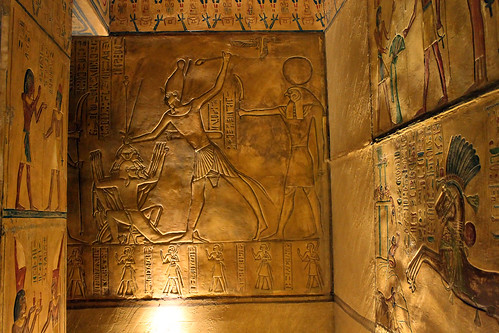Navigation Pabillion (Seville, 1992)
Today we are going to talk about one of the tens of buildings that were part of the Universal Exposition that took place in Seville in 1992 (Seville Expo '92). It is, indeed, the Navigation Pavilion, located on La Isla de La Cartuja.
This pavilion, projected by the Spanish architect Guillermo Vázquez Consuegra, was first thought to be a space where the motto of the exposition, 'The era of discoveries', in particular, those by sailors in America, considered 'the new world'. For that reason, the materials and forms used for its construction resemble the life and work of them: the use of wood (what the old boats were made of), the same happens with steel, highly employed in the naval industry; or the shapes, that remind us to the ribs of a boat.
Inside it, we can discover a whole exposition about the expeditions made, the discoveries and the development and improvement of the naval industry. For instance, there is a specific part of the exposition dedicated to the reconstruction of Colon's trip and his ship. It is a perfect way to get to experience in flesh and blood how it was and how it was felt.
The disposition of the pavilion is quite complex in fact, since we can decompose it into different 'blocks'. One of them is the Schindler Tower, a watch tower situated a bit far from the pavilion itself, somehow, inside the river Guadalquivir.
However, this is not the only purpose of this building, since, from time to time, different expositions about various tematics are organised there. Yesterday, when I got to make the visit (not for the first time), I witnessed the 'inmserive experience' of Van Gogh, so called 'VAN GOGH, GRANDES ÉXTOS'. Another example I had the opportunity to see was in 2016, an exposition about the Egiptian world, particularly, about Ramses II, 'RAMSES, REY DE REYES'. With this, it is appreciable the different uses a pavilion like this can have, as for instances, uses that are educational for everyone.
As a whole, we can observe that it is a work that presents honesty, not only in the structure but also in the use of materials: materials that look like what they are. It is a clear post-modern building that, luckily, after more than thirty years, still has the same goal and essence it did when it was first inaugurated.
Have you visited it? We read you in comments!





.png)
Comments
Post a Comment